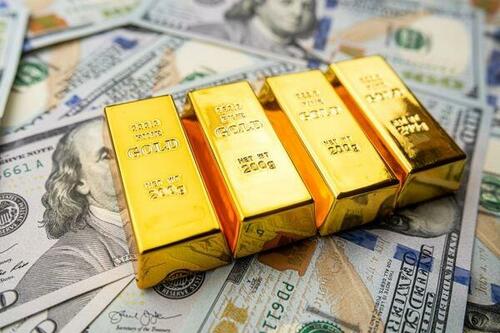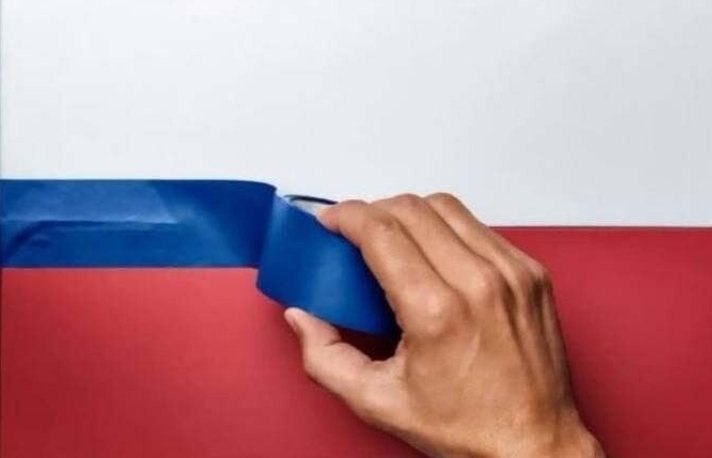
Денежно-кредитная перезагрузка Трампа: на горизонте ли доллар, обеспеченный золотом?
Автор: Ник Джамбруно, InternationalMan.com,
«Все больше и больше людей спрашивают, положит ли золотой стандарт конец финансовому кризису, в котором мы оказались. Вопрос не столько в том, поможет ли это или мы прибегнем к золоту, сколько в том, когда.
Все великие инфляции заканчиваются принятием реальных денег — золота — и отказом от политических денег — бумаги. "
Рон Пол
Два мощных катализатора приводят к предстоящей денежной перезагрузке.
Во-первых, федеральный долговой кризис достиг критической точки, с стремительно растущими процентными платежами, которые теперь превышают расходы на оборону и на пути к тому, чтобы стать крупнейшей отдельной статьей бюджета. Эта траектория неустойчива, сигнализируя о том, что крупный финансовый расчет неизбежен.
Во-вторых, администрация Трампа считает доллар США сильно переоцененным, полагая, что он наносит ущерб экономике и что необходимо срочное вмешательство.
Итак, каково проверенное и верное решение обеих этих проблем?

Ответ очевиден: значительная девальвация доллара.
Обесценивание доллара является благом для должников, особенно правительства США, позволяя ему занимать в долларах и погашать в долларах. Если не считать прямого дефолта, который Вашингтон вряд ли сделает, ослабление доллара является единственным практическим способом решения нарастающего долгового кризиса.
В то же время девальвация напрямую затрагивает озабоченность администрации Трампа тем, что доллар США опасно переоценен, что, по их мнению, наносит ущерб американской промышленности и экспорту.
Вот почему значительная девальвация доллара не просто возможна. Я считаю, что это почти определенность.
Вопрос только в том, как это сделает администрация Трампа. И если история является путеводителем, золото снова будет в центре всего этого.
Прежде чем идти дальше, важно понять позицию Трампа в отношении золота.
Не секрет, что Трамп глубоко ценит золото, что отражается в его зданиях, брендинге и личном стиле. От высоких золотых букв на его свойствах до роскошного золотистого декора башни Трампа, его симпатия к желтому металлу безошибочна.
Увлечение Трампа золотом восходит к 1970-м годам, когда он получил большую прибыль в качестве золотого инвестора. После того, как правительство США легализовало частную собственность на золото в 1975 году, он агрессивно купил его по цене около 185 долларов за унцию. Размышляя об инвестициях, он позже заметил:
"Мы продали в диапазоне $780, $790. Мы отлично справились. Это проще, чем строительный бизнес. "
Затем, в сентябре 2011 года, Трамп принял золотые слитки в качестве залога от коммерческого арендатора — одного из крупнейших дилеров драгоценных металлов в США, APMEX. Вместо наличных компания оплатила свой депозит тремя однокилограммовыми слитками золота, каждый из которых на 99,99% чист и в совокупности весит около 96,5 тройских унций.
Организация Трампа всегда стремилась быть золотым стандартом. Мы приветствуем APMEX в качестве нашего арендатора в 40 Wall, престижном и историческом месте. Наследие золота как драгоценного товара превзошло его, став жизнеспособной валютой и общепринятым универсальным денежным стандартом. Центральные банки по всему миру держат золото в качестве резервного актива. Это также потрясающий, потенциально прибыльный диверсификатор в портфеле, особенно с такой волатильностью на фондовом рынке. "
В интервью GQ 2015 года Трамп открыто выразил свое восхищение денежной системой, обеспеченной золотом, заявив:
«Восстановить золотой стандарт будет очень трудно, но, мальчик, это было бы замечательно. У нас есть стандарт, на котором можно основывать свои деньги. "
Он повторил это мнение в другом интервью, когда его спросили о возможности возвращения к золотому стандарту:
Интервьюер: Можете ли вы представить себе сценарий, в котором эта страна когда-нибудь вернется к золотому стандарту?
Трамп: Мне нравится золотой стандарт. Есть что-то очень хорошее в золотом стандарте. Есть что-то очень хорошее в том, чтобы иметь что-то твердое, вы знаете, у нас была очень очень твердая страна, потому что она была основана на золотом стандарте. У нас этого больше нет. Есть что-то очень хорошее в концепции этого.
Министр финансов Трампа Скотт Бессент разделяет подобный энтузиазм в отношении золота. В интервью в ноябре прошлого года он ясно дал понять:
Я думаю, что мы находимся на долгосрочном бычьем рынке золота. Мы наблюдаем накопление резервов центральными банками. Я внимательно за ним слежу. Это моя самая большая позиция. "
Поскольку Трамп и Бессент сигнализируют о сильном интересе к золоту, идея денежного сдвига, поддерживаемого золотом, больше не является просто спекуляцией — она может быть частью более широкой денежной перестройки, уже в движении.
Итак, как золото может быть вовлечено в денежную перезагрузку сегодня?
Значительная девальвация доллара, вероятно, необходима для решения долгового кризиса и растущего торгового дисбаланса. В предыдущих монетарных перезагрузках решение было простым: правительство США просто переоценило золото по более высокой цене, фактически обесценив доллар.
Однако сегодняшняя ситуация иная. С 1973 года правительство США перестало напрямую устанавливать цену на золото, и теперь оно свободно плавает на открытом рынке.
Это поднимает важный вопрос: Как администрация Трампа может использовать золото для ослабления доллара?
Хотя никто не может сказать наверняка, одним из возможных способов для правительства США будет печатать доллары, чтобы купить золото на открытом рынке, что приведет к повышению цены на золото и, в свою очередь, девальвации доллара по отношению к нему.
Помните, что Трамп не заинтересован в незначительных изменениях. Он ясно дал понять, что хочет фундаментальной и постоянной перестройки, чтобы решить две экзистенциальные проблемы: долговой кризис и переоцененный доллар, препятствующие американской промышленности.
Учитывая масштабы этих проблем, разумно ожидать существенно более высокую цену на золото. Цена золота в 10 000, 20 000 или даже выше находится в пределах возможного.
Как только эта крупная девальвация доллара будет достигнута, логичным следующим шагом может быть привязка доллара к золоту для обеспечения денежной стабильности и восстановления глобального доверия. Именно здесь Форт Нокс может снова стать актуальным, поскольку его золотые запасы потенциально могут быть использованы для поддержки нового доллара, связанного с золотом.
Привязка доллара к золоту по гораздо более высокой цене после девальвации также резко снизит бремя долга США. Если бы золото было переоценено до 20 000 долларов за унцию, то 261 миллион унций, которые, как утверждает Вашингтон, внезапно стоили бы около 5,2 триллиона долларов, что значительно укрепило бы баланс правительства США.
Точная форма нового золотого стандарта неясна. Правительство может поддержать 20%, 40% или более денежной массы золотом или перейти к полностью обеспеченной золотом системе, даже позволяя золотым монетам циркулировать в качестве законного платежного средства, как это было до конфискации 1933 года.
Когда мы соединяем точки, возникает большая картина.
Трамп поставил золотые запасы Форт-Нокса в центр национального внимания, призвав провести аудит впервые за десятилетия.
Покупки золота центральными банками ускоряются на рекордных уровнях.
Необычайно большой приток физического золота в США выходит далеко за рамки обычной рыночной активности - интригующее событие перед потенциальным аудитом Fort Knox.
Долговой кризис в США достиг переломного момента и выходит из-под контроля, что делает денежно-кредитную перезагрузку практически неизбежной.
Администрация Трампа считает доллар опасно переоцененным, обвиняя его в ухудшении торгового дисбаланса Америки и экономической стагнации.
Условия сегодня созрели для денежной перезагрузки.
США пережили многочисленные денежные сбросы в своей истории, и большинство из них последовали той же схеме: переоценка золота и девальвация доллара.
Если бы администрация Трампа перезагрузила денежную систему, это, вероятно, включало бы девальвацию доллара, переоценку золота до гораздо более высокой цены и привязку доллара США к золоту. Доллар, обеспеченный золотом, потребует проверки резервов Форт-Нокса.
Когда вы изложите все факты, становится ясно, что новая денежная перезагрузка, вероятно, на горизонте.
Все признаки указывают на исторический сдвиг: Трамп смотрит на перезагрузку доллара, золото тихо перемещается в хранилища США, а долговой кризис достигает критической точки.
Это не спекуляция — это учебник, который использовался ранее.
Что все это значит для ваших денег и как вы можете превратить этот переход в возможность?
Вот почему я только что выпустил срочный новый отчет, раскрывающий три основные стратегии, которые вам нужно подготовить, и прибыль от того, что будет дальше. Нажмите здесь, чтобы загрузить его сейчас, прежде чем окно закроется.
Тайлер Дерден
Свадьба, 05/28/2025 - 17:00












